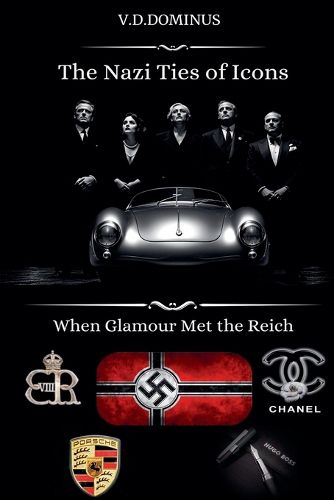Readings Newsletter
Become a Readings Member to make your shopping experience even easier.
Sign in or sign up for free!
You’re not far away from qualifying for FREE standard shipping within Australia
You’ve qualified for FREE standard shipping within Australia
The cart is loading…






This title is printed to order. This book may have been self-published. If so, we cannot guarantee the quality of the content. In the main most books will have gone through the editing process however some may not. We therefore suggest that you be aware of this before ordering this book. If in doubt check either the author or publisher’s details as we are unable to accept any returns unless they are faulty. Please contact us if you have any questions.
The great names of the past, which we often associate with sophistication, innovation, and glamour, often have stories hidden behind their shining facades. What do Coco Chanel, whose perfumes became a symbol of luxury; Ferdinand Porsche, whose cars remain the pinnacle of engineering excellence; Hugo Boss, whose suits defined style for generations; and King Edward VIII, whose life was shrouded in scandal, have in common? They are united by one thing-a connection to Nazi Germany, a connection that sheds light on the dark shadows of their fame.
The Nazi Ties of Icons: When Glamour Met the Reich lifts the veil on the astonishing and unsettling intertwining of luxury and ideology, fashion and politics. These individuals, who became symbols of their eras, intersected with one of history's darkest regimes, leaving behind a complex legacy. What drove them to align with the Nazi movement? Were they victims of circumstance, pragmatic opportunists, or genuine supporters of the regime? This book explores these questions, inviting readers to view familiar names from a new perspective and to reflect on the intricate connections between art, power, and politics, as well as the role of morality in our understanding of the past. By looking into the shadows surrounding these icons, we may better understand not only them but also ourselves. History teaches us not just about the past-it shapes our future.
$9.00 standard shipping within Australia
FREE standard shipping within Australia for orders over $100.00
Express & International shipping calculated at checkout
This title is printed to order. This book may have been self-published. If so, we cannot guarantee the quality of the content. In the main most books will have gone through the editing process however some may not. We therefore suggest that you be aware of this before ordering this book. If in doubt check either the author or publisher’s details as we are unable to accept any returns unless they are faulty. Please contact us if you have any questions.
The great names of the past, which we often associate with sophistication, innovation, and glamour, often have stories hidden behind their shining facades. What do Coco Chanel, whose perfumes became a symbol of luxury; Ferdinand Porsche, whose cars remain the pinnacle of engineering excellence; Hugo Boss, whose suits defined style for generations; and King Edward VIII, whose life was shrouded in scandal, have in common? They are united by one thing-a connection to Nazi Germany, a connection that sheds light on the dark shadows of their fame.
The Nazi Ties of Icons: When Glamour Met the Reich lifts the veil on the astonishing and unsettling intertwining of luxury and ideology, fashion and politics. These individuals, who became symbols of their eras, intersected with one of history's darkest regimes, leaving behind a complex legacy. What drove them to align with the Nazi movement? Were they victims of circumstance, pragmatic opportunists, or genuine supporters of the regime? This book explores these questions, inviting readers to view familiar names from a new perspective and to reflect on the intricate connections between art, power, and politics, as well as the role of morality in our understanding of the past. By looking into the shadows surrounding these icons, we may better understand not only them but also ourselves. History teaches us not just about the past-it shapes our future.